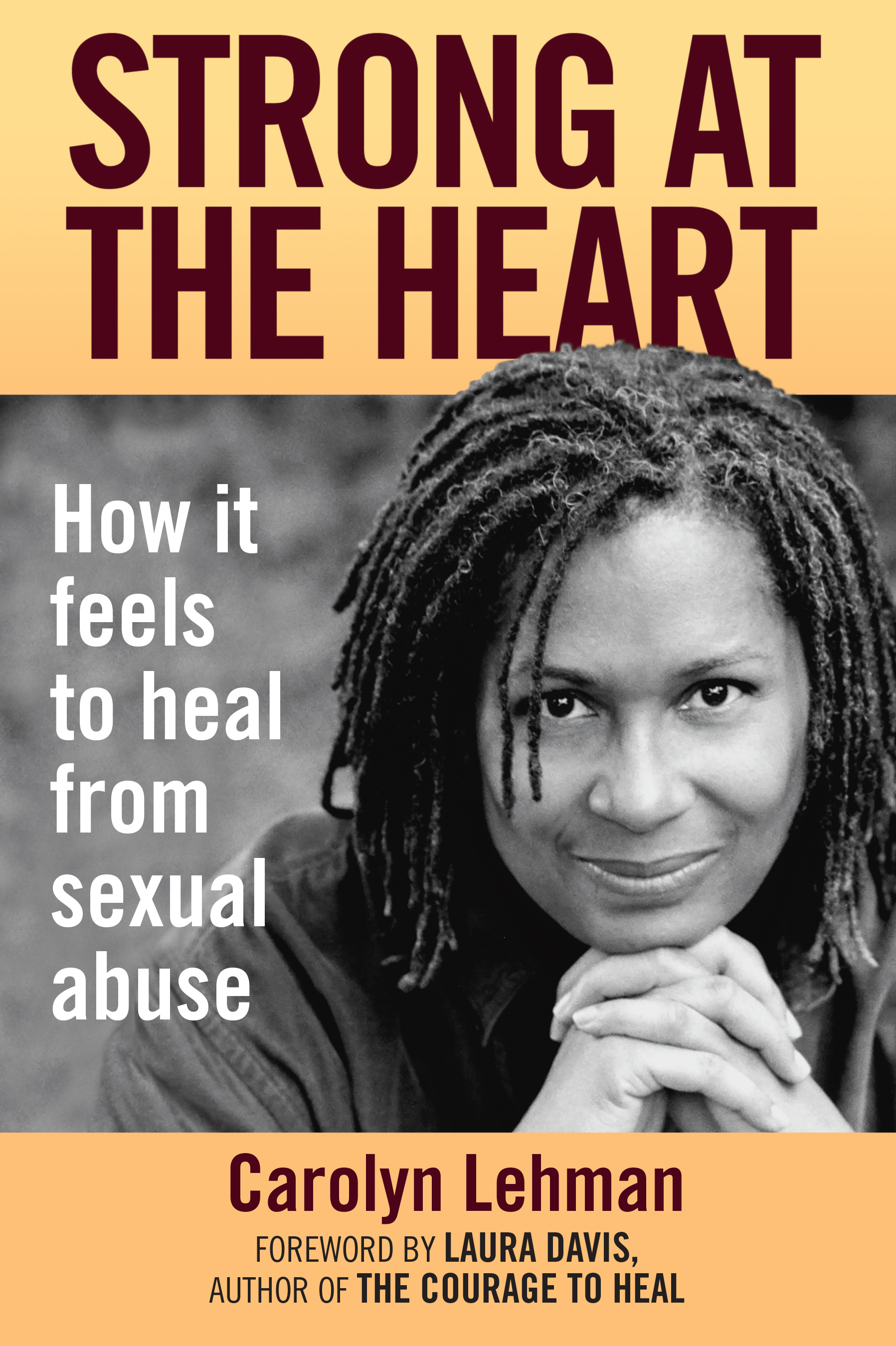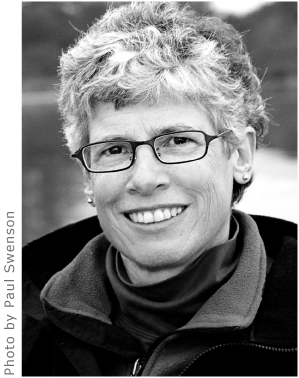STRONG AT THE HEART
By Carolyn Lehman Forward by Laura Davis
“This book is an absolute gift to the world.” – Jacqueline Woodson
When child sexual abuse is covered in the news, the reality can be heartbreaking.
STRONG AT THE HEART presents a healing, positive side to this too-frequent story.
“It’s hard work, but people can heal–and gain a lot of strength from that process,” according to Carolyn Lehman, author of Strong at the Heart: How It Feels to Heal from Sexual Abuse. 
The book contains interviews with men, women and teens who have experienced rape and molestation, and have gone on to create rich and satisfying lives.
“It’s a very out book,” Lehman explains the use of real names and photographs with the interviews. “What I want to do is de-stigmatize the experience of being a survivor. It’s the perpetrator who is responsible for sexual assault or abuse. The shame belongs to them, not us.” http://www.strongattheheart.com/
Quote from Gail Karwoski regarding the strength that can come from the experience of tauma as a child:
“Research about what happens during a disaster confirms the hard lesson from my childhood: Even after something awful happens, we can survive. Disaster shakes us to our core, but we find the strength we need. In the worst of times, we reach out and help each other. We come away as better people.”
I talked with Carolyn about her book – her answers provide insight and inspiration:
Why did you write this book?
I wrote Strong at the Heart because I wanted young people who had been abused or molested to be able to open a book, look into the faces of people like themselves, read their true stories, and say, “If he made it, if she made it, so can I.”
The stigma of being a sexual victim can stand in the way of people getting help. My goal was to de-stigmatize the experience by using photographs and real names of people who had done a significant amount of healing, and to allow them to speak directly to readers. They have a lot of wisdom to share.
It’s a very out book. It took a lot of courage, especially for the young people who came forward, but no one has regretted it. And I hear from a lot of readers whose lives have been changed by reading the book. That is tremendously gratifying.
How did you find the people you interviewed?
From the very start, I wanted this book to reflect the demographics of abuse, not the stereotypes or my own bias. That meant interviewing people from a wide range of backgrounds and cultures, who had experienced different kinds of sexual abuse and found different ways to heal. So I set out purposefully looking for that diversity. I called on contacts in the survivor movement and cold called social service agencies. My search took me all over North America.
In Manitoba, Canada, I interviewed sixteen-year-old Sheena who I found through the Restorative Justice program in her Ojibway community. In the San Francisco area I interviewed Arturo who was raped by two pedophiles when he was ten and who self-medicated with street drugs until he found a way to turn his life around.
I really wanted to include at least one teenage boy. And that’s hard, because just imagine how difficult it is for boys to deal with sexual victimization, let alone go public with it. Then the director of Survivors’ Network of those Abused by Priests put me in touch with seventeen-year-old Jonathan from South Jersey. He’d already done some public speaking and his parents, his counselor, his whole family, supported him in doing this book. His chapter is terrific.
Jonathan speaks so frankly about how his own homophobia stood in the way of getting help and is so clear about how the abuse lead to acting out. He is thoughtful and kind, and at the same time, a real “rowdy boy” as he characterizes himself and his brothers. At the time of the interview, he was working with law enforcement on a sting operation against his perpetrator. Father Jim was caught, pled guilty and went to jail.
While I especially sought out teens and twenty-somethings, the older people I interviewed were important, too. Through them you can see how the abuse they experienced and the healing process has played out so far over the course of their lives. And you get a real portrait of the post traumatic growth they achieved.
What do you mean by post traumatic growth?
It’s an important part of healing that we don’t often talk about.
When I first started writing and speaking about childhood sexual abuse, in the early 1980s, the message was just getting out that sexual abuse was all too common and that it was damaging to kids. Survivors were usually portrayed as victims without much understanding of what that might look like.
Today if I say that I experienced PTSD or Post Traumatic Stress Disorder, most people would have some idea of what that means. Thanks to our soldiers returning from recent wars, people generally know that past trauma can cause nightmares and flashbacks and really disrupt a person’s life.
Healing from trauma is not like gluing together a broken plate. It isn’t about putting the pieces together the way they were before. It is about understanding what happened to you, connecting with those deep emotions that might have been too threatening at the time, mourning your losses, and looking for meaning in your own experience. There is the potential for a great deal of growth in going through that process.
It can change the direction of a person’s life. Tino was a forestry inspector when I first interviewed him. Sitting with his grandmother when she lay dying broke open the emotional memories of abuse at her hands, a terrifying experience. But eventually it lead to a totally unexpected future as a social worker and as the director of a Hospice program.
You can see post traumatic growth in Akaya’s deepening understanding of her father and the ownership he acted out on her; she comes to appreciate its roots in slavery and her family history. “My father chose not to beat his children; that was a big link in the chain that he broke. And the sexual abuse, that ends with me.”
Akaya’s healing was excruciating, but she grew so much spiritually and emotionally, from the devastated little girl of memory to a magnificent woman. It takes a huge heart to have compassion for your abuser while still holding onto your own truth–and without taking the easy route of premature “forgiveness.”
I think we don’t talk about this potential for a couple of reasons. One is that survivors already are under pressure to “just get over it,” “move on,” and “forgive.” When that’s premature, it’s more damaging than helpful. The second is that, while we are still just getting it about the damage abuse can cause, it might feel counter-productive to talk about the potential for growth, as if there were some benefit from interpersonal violence.
But in Strong at the Heart, there’s no preaching about this or anything else. The stories stand on their own. You can see how each person’s choices led them–sometimes awkwardly, sometimes erratically, but with great determination–toward a better future.
What’s different about the second edition?
None of the individuals’ narratives at the heart of the book have changed. These are their personal stories. And they have really stood the test of time.
I had two important goals in this second edition. After the book came out for teens, on Farrar Straus and Giroux’s Young Readers’ list, I discovered that I had at least as many adult as teen readers. Laura Davis and I made the front matter equally friendly for adults and teens.
The second goal was updating the resource section and to include international resources; this edition is available in Europe as well as the US.
One other goal was to have an paperback edition that was inexpensive.
FACTS about Childhood Sexual Abuse
One in four women and one in six men acknowledge sexual abuse in childhood.
Two thirds of victims of reported rape are under age eighteen.
Only 7% of offenders are strangers. Most offenders are family members.
Symptoms of Post Traumatic Stress were reported by and then treated for the majority of victims.
Post Traumatic Growth is positive change experienced as a result of the struggle with a major life crisis or a traumatic event. Post Traumatic Growth is a recognized goal in psychology, spirituality and literature.
Educator and author CAROLYN LEHMAN has spoken publicly on overcoming abuse for more than twenty years. Her children’s novel Promise Not to Tell received the Christopher Award for its sensitive portrayal of a young girl’s struggle to tell about molestation. http://www.strongattheheart.com/

3 comments for “STRONG AT THE HEART”